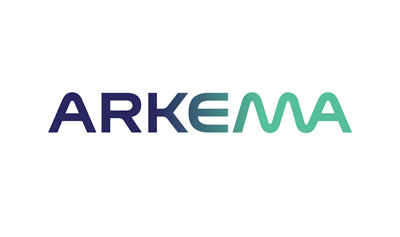Copyright breezyscroll

The glowing, poreless “glass skin” look, made famous by South Korea’s beauty industry, has taken over global skincare routines. In India, this trend has found eager followers chasing that radiant, translucent finish. But while the pursuit of hydration and luminosity may sound harmless, experts warn that the glass skin ideal might be biologically incompatible with Indian skin types—and even harmful in the long run. What exactly is the Korean glass skin trend? “Glass skin” refers to a skin texture so smooth and luminous that it appears reflective, almost like glass. Achieving it typically involves multi-step skincare routines with layering serums, toners, essences, and moisturizers to build deep hydration and radiance. South Korea’s skincare philosophy emphasizes purity, youthfulness, and flawlessness, which are deeply rooted in cultural ideals rather than scientific or dermatological evidence. For many Indian users, replicating these routines without adapting them to local climate, skin tone, and genetics often leads to irritation, hyperpigmentation, and sensitivity. Why glass skin isn’t ideal for Indian skin types 1. Genetic and climatic differences Indian skin naturally contains higher levels of melanin, which offers UV protection but also makes it prone to hyperpigmentation and post-inflammatory darkening. South Korean products, developed for lighter, thinner, and less oily skin, are rarely formulated to handle India’s hot, humid, and polluted environment. Heavy layering of products can clog pores and worsen acne or oiliness. The same routines that yield dewiness in Seoul may lead to breakouts in Mumbai or Delhi. “Piling on several products with active ingredients can interfere with the skin’s natural barrier,” says Dr. D.M. Mahajan, Senior Consultant, Dermatology, Indraprastha Apollo Hospitals. “Overuse can cause dryness, irritation, or inflammation—especially in Indian skin that’s already exposed to higher heat and pollution levels.” What science says about achieving ‘glass skin’ The science behind glowing skin lies in hydration and maintaining healthy skin barriers, not in mimicking another culture’s aesthetic. Dermatologists note that the appearance of glass-like skin often comes from temporary surface hydration rather than lasting structural changes in the skin. In other words, these products can make skin look radiant for a few hours, but they don’t necessarily improve underlying skin health. Instead, long-term benefits depend on consistent sun protection, balanced hydration, and minimal product overload. The mental health toll of beauty perfectionism Beyond the physical effects, the pursuit of perfection in skincare can damage self-esteem and mental health, especially among teenagers. A 2024 study by the International Journal of Indian Psychology found that teenage girls aged 13–16 in Delhi-NCR reported negative body image linked to exposure to international beauty standards on social media. Constant comparison to flawless online portrayals can contribute to body dysmorphia—a disorder where individuals fixate on perceived flaws in their appearance. This obsession with unrealistic beauty ideals can foster anxiety, dissatisfaction, and colourism, reinforcing harmful beliefs that fair, poreless skin equals beauty. Korean products that may harm Indian skin Some Korean products are formulated for cooler, less humid climates and may not be suitable for the Indian environment. Avoid using products that create occlusion or trap heat and sweat. Heavy creams and sleeping masks – These can clog pores and trigger acne. Thick emulsifying cleansing balms – May disrupt the skin barrier and lead to breakouts. Multi-acid exfoliating toners – Can over-exfoliate darker skin tones, increasing pigmentation risk. Korean beauty products that can work—if used wisely The solution isn’t total avoidance, but adaptation. Dermatologists suggest selecting lightweight, hydrating, and soothing formulations instead of copying the full Korean routine. Lightweight gels or water-based creams Ingredients like Centella Asiatica (cica), green tea, or mugwort for redness and irritation Brightening—not bleaching—agents such as niacinamide, rice water, and Vitamin C Simple routines: Cleanse → Treat → Moisturize → Protect (SPF) Reframing the idea of beauty: From “glass” to “healthy glow” Instead of striving for poreless perfection, Indian consumers can embrace skin positivity, focusing on healthy, even-toned, and protected skin rather than translucency. True skincare success isn’t about mimicking trends from Seoul or Tokyo; it’s about understanding what your skin needs based on genetics, climate, and lifestyle. The “glass skin” trend can inspire discipline and hydration, but it should never replace evidence-based, individualized care. “The quest for radiant skin should not come at the expense of skin health,” Dr. Mahajan reminds. “A dermatologist-guided routine tailored to Indian conditions will always outperform any viral trend.” The takeaway The K-beauty glass skin trend may look aspirational on social media, but for most Indian skin types, it’s neither practical nor safe to replicate wholesale. The smart move? Adopt the principles of hydration and self-care, but adapt the methods to suit your skin’s biology. Healthy skepticism, science-backed routines, and dermatologist guidance are your best allies in achieving a lasting glow—minus the damage. Glass skin = cultural trend, not universal science. Indian skin needs lightweight hydration, not heavy layering. Beware of product overuse leading to sensitivity or pigmentation. Focus on health, not perfection.



